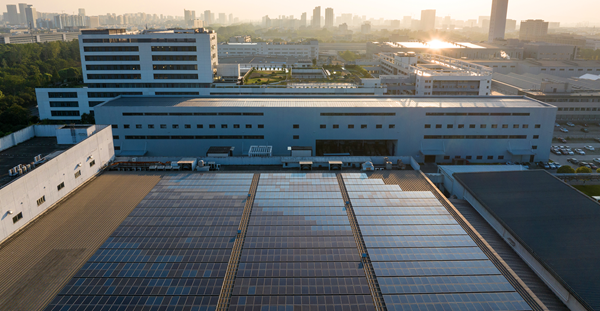We sat down with Alexis Haass, Chief Sustainability Officer at Arcadis, to explore how Arcadis optimizes investments in cities like Geneva, London, and New York to address long-term impact. We also discussed how Arcadis overcomes barriers from inflation and interest rates to invest in sustainable building practices, delving into the role of low-carbon design in construction pricing and Arcadis’ ongoing commitment to sustainability.
With cities like Geneva, London, and New York being the most expensive cities to build in, how can your company help clients invest their money more efficiently?
As a trusted partner to clients such as the city of New York, Arcadis gets to know the in-depth climate transition plans these cities have across their energy, transport and building sectors. We are able to bring our expertise in technical areas - such as energy transition, or net-zero buildings and facilities - and advise our clients on how to optimally accelerate their master planning, and how to build smart today, making choices that will cause their assets to grow in value as the new Net Zero economy and climate reality comes into being.
The high demand for the most environmentally friendly structures in prime locations shows a definitive change in markets in favor of modern, green stock. We know all investors faced higher construction and increased finance costs in 2022, reducing the number of transactions, and depressing asset values. And while rents for brand-new Grade A properties in prime locations remained stable, the prospect for returns from older properties has become less favorable. So, it makes sense that it can feel hard to invest in additional sustainability benefits when cost pressures have risen overall. As the cost of finance increased by more than 40 basis points in 20221, project viability became a real concern, adding to the ongoing supply chain challenges we saw threatening project deliverability in 2021. However regardless, we still counsel all clients to avoid the trap of 'being penny wise, and pound foolish.' In other words, we advise them how to account for the important quantitative and qualitative sustainability considerations that they must be incorporating into their investments today, so they get an accurate picture - a ‘true’ Net Present Value - on their planned construction investments.
This significant shift towards a ‘green premium’ attributed to the value of the most sustainable properties will soon become the new baseline. When this happens, the market will have crossed an obsolescence horizon. At that time, the clients who decided to do nothing due to the increasing cost of construction would be left behind and have no other option but to offer prospective owners, occupiers or investors what we have called a ‘brown discount’ on the least sustainable properties. Our latest ICC 2023 Report highlights that already now the green premium for prime assets versus the rent discount for tired buildings has widened to between 25% to 35% in markets as diverse as London, Paris, and Sydney, according to latest data from RCA/MSCI.
Accordingly, we suggest our clients not delay the investment to improve asset performance. This approach might be acceptable given current market conditions and in the short-term, but taking the eye off the ball with respect to changing client and ESG expectations is a risk too far. Therefore, it is essential to maintain the long-term view – keep your eye on the prize and look through the current cycle. Clients must take the steps needed to protect and enhance asset returns for both today and the long term.
The ICC highlights the importance of a long-term view in preserving value. What steps are you taking to ensure that your company is considering the long-term impact of its actions?
The factors affecting long-term value are complex and interlinked. They vary by city, by location and by asset type. To support this complex process, our ICC 2023 Report focuses on four pillars that summarize the key variables that will help determine an asset’s relevance and value in the current market. By applying the pillars holistically, decision-making will be more balanced and better informed.
- Energy performance and decarbonization
- Climate change exposure (affecting assets and infrastructure)
- Local infrastructure resilience
- Potential for asset repositioning
These four pillars can be used as guidance to prioritize asset investment while controlling budget. Prioritization, however, should not be an excuse not to plan for all pillars, now. Holistic planning should always come up front. Instead, the prioritization laid out in the pillars should be used to judge what can be built today versus what should be in the overall asset lifecycle plan and can afford to be postponed a year or two.
With the ongoing impact of local inflation and rising interest rates, what steps is Arcadis taking to address these barriers and continue investing in sustainable building practices?
Although the current market conditions would suggest that a ‘do nothing’ or a ‘wait and see’ approach would be the safest options, these tactics are no longer fit-for-purpose. This is due to the demand shift towards the green premium, which puts some current assets at risk of brown discounts, or even future non-compliance when regulations get stricter. It is not only regulatory requirements though; occupiers and end-users are requesting ever improving performance, and the risk of a brown discount will only increase as market demand grows, and as climate change further affects consumer behavior. Therefore, improving assets’ resilience is the key to the best long-, and now even mid-term, investment returns.
But how can a client afford this? Arcadis works with a holistic sustainability approach focusing on carbon and water reduction, nature, and biodiversity enhancement as an overall system. Our unique approach is focused on maximizing the sustainability returns with the same investment. One easy example is installing solar hot water panels and rainwater harvesting tanks on the roof during the installation of PV panels. This results in a minor increase in initial CAPEX for the additional systems, while securing the long-term resilience of the asset. It eliminates the repeated costs for installations at the roof, which would disturb the occupants and change the control systems at various times.
Juggling so many variables is not an easy task, and there can be many barriers. So, in our ICC 2023 Report, we proposed some ‘no regret actions’, such as:
- Make simple energy efficiency improvements
- Harvest carbon emissions reductions (associated with energy sourcing)
- Seek out governmental incentives (and avoid future penalties) for low-carbon retrofits
- Use digital tools to understand and improve user behavior
In the same ICC 2023 Report, our teams developed a five-step action plan to help clients identify whether they are considering and acting on all relevant issues that contribute to long-term returns and asset value. These are:
- Plan for how regulation and governance will affect property values.
- Identify and quantify the full range of risk exposure affecting your property portfolio.
- Track and adapt to changes in user demand.
- Identify repositioning opportunities.
- Build and measure a benefits case.
How does Arcadis ensure that low-carbon design is being accounted for in construction pricing, and what role does this play in your approach to sustainable building practices?
In several projects, Arcadis is already looking deep into carbon benefits and savings. Our unique approach is something that has already been showing benefits to the client. For example, as part of our role on HS2, by paying attention to both material and carbon implications in design, we were able to reduce the amount of concrete being used by up to 30%. Concrete is one of the most carbon-intensive materials out there, and the subsequent savings were enormous: avoiding an estimated 7,433 tons of carbon being emitted into the atmosphere (the equivalent of 20,500 return flights from London to Edinburgh!). In addition to the carbon reduction benefit, the design change also delivered a significant cost benefit to the overall project.
It is worth highlighting that carbon reduction and carbon savings approaches are expected to be ‘business as usual’ at Arcadis, since leading sustainable solutions are at the core of our strategy. We do, however, actively engage in cross-industry organizations, since we believe standardization and government action is needed to ensure carbon calculation is a regular feature in construction procurement across the industry.
To learn more, read our International Construction Costs 2023 report.






